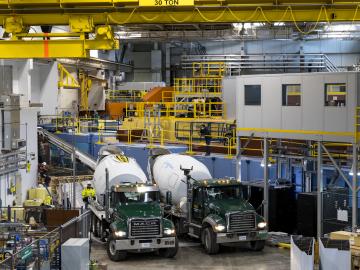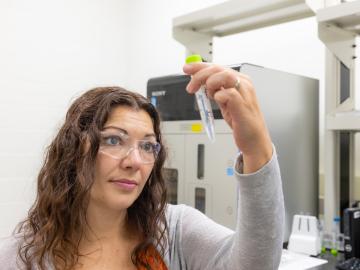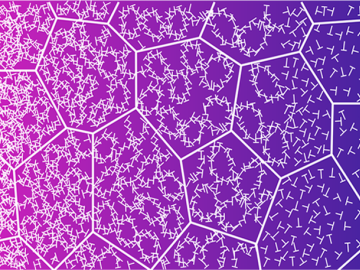
Filter News
Area of Research
- Advanced Manufacturing (6)
- Biology and Environment (36)
- Building Technologies (2)
- Computational Biology (1)
- Computational Engineering (1)
- Computer Science (7)
- Energy Science (43)
- Energy Sciences (1)
- Fusion and Fission (16)
- Fusion Energy (11)
- Materials (33)
- Materials for Computing (6)
- National Security (12)
- Neutron Science (78)
- Nuclear Science and Technology (13)
- Quantum information Science (7)
- Supercomputing (34)
News Type
News Topics
- (-) Biotechnology (28)
- (-) Fusion (47)
- (-) Machine Learning (51)
- (-) Molten Salt (7)
- (-) Neutron Science (109)
- (-) Physics (38)
- (-) Quantum Science (59)
- 3-D Printing/Advanced Manufacturing (89)
- Advanced Reactors (25)
- Artificial Intelligence (92)
- Big Data (62)
- Bioenergy (84)
- Biology (100)
- Biomedical (53)
- Buildings (50)
- Chemical Sciences (48)
- Clean Water (30)
- Composites (21)
- Computer Science (153)
- Coronavirus (30)
- Critical Materials (17)
- Cybersecurity (17)
- Education (2)
- Emergency (4)
- Energy Storage (64)
- Environment (164)
- Exascale Computing (52)
- Fossil Energy (7)
- Frontier (45)
- Grid (54)
- High-Performance Computing (93)
- Hydropower (12)
- Irradiation (2)
- Isotopes (38)
- ITER (7)
- Materials (87)
- Materials Science (89)
- Mathematics (11)
- Mercury (10)
- Microelectronics (3)
- Microscopy (34)
- Nanotechnology (29)
- National Security (63)
- Nuclear Energy (85)
- Partnerships (37)
- Polymers (18)
- Quantum Computing (39)
- Security (17)
- Simulation (51)
- Software (1)
- Space Exploration (23)
- Statistics (3)
- Summit (48)
- Transportation (66)
Media Contacts

Cement trucks entering and exiting the Spallation Neutron Source are a common sight as construction of the VENUS neutron imaging beamline progresses. Slated for completion and commissioning in 2024-2025, VENUS is the twentieth neutron instrument at SNS and will offer many new capabilities.

A rapidly emerging consensus in the scientific community predicts the future will be defined by humanity’s ability to exploit the laws of quantum mechanics.

A team of scientists led by the Department of Energy’s Oak Ridge National Laboratory and the Georgia Institute of Technology is using supercomputing and revolutionary deep learning tools to predict the structures and roles of thousands of proteins with unknown functions.

An analysis by Oak Ridge National Laboratory shows that using less-profitable farmland to grow bioenergy crops such as switchgrass could fuel not only clean energy, but also gains in biodiversity.

A discovery by Oak Ridge National Laboratory researchers may aid the design of materials that better manage heat.

Oak Ridge National Laboratory researchers determined that designing polymers specifically with upcycling in mind could reduce future plastic waste considerably and facilitate a circular economy where the material is used repeatedly.

Energy Secretary Jennifer Granholm visited ORNL on Nov. 22 for a two-hour tour, meeting top scientists and engineers as they highlighted projects and world-leading capabilities that address some of the country’s most complex research and technical challenges.

A team led by the U.S. Department of Energy’s Oak Ridge National Laboratory demonstrated the viability of a “quantum entanglement witness” capable of proving the presence of entanglement between magnetic particles, or spins, in a quantum material.

Carrie Eckert applies her skills as a synthetic biologist at ORNL to turn microorganisms into tiny factories that produce a variety of valuable fuels, chemicals and materials for the growing bioeconomy.



